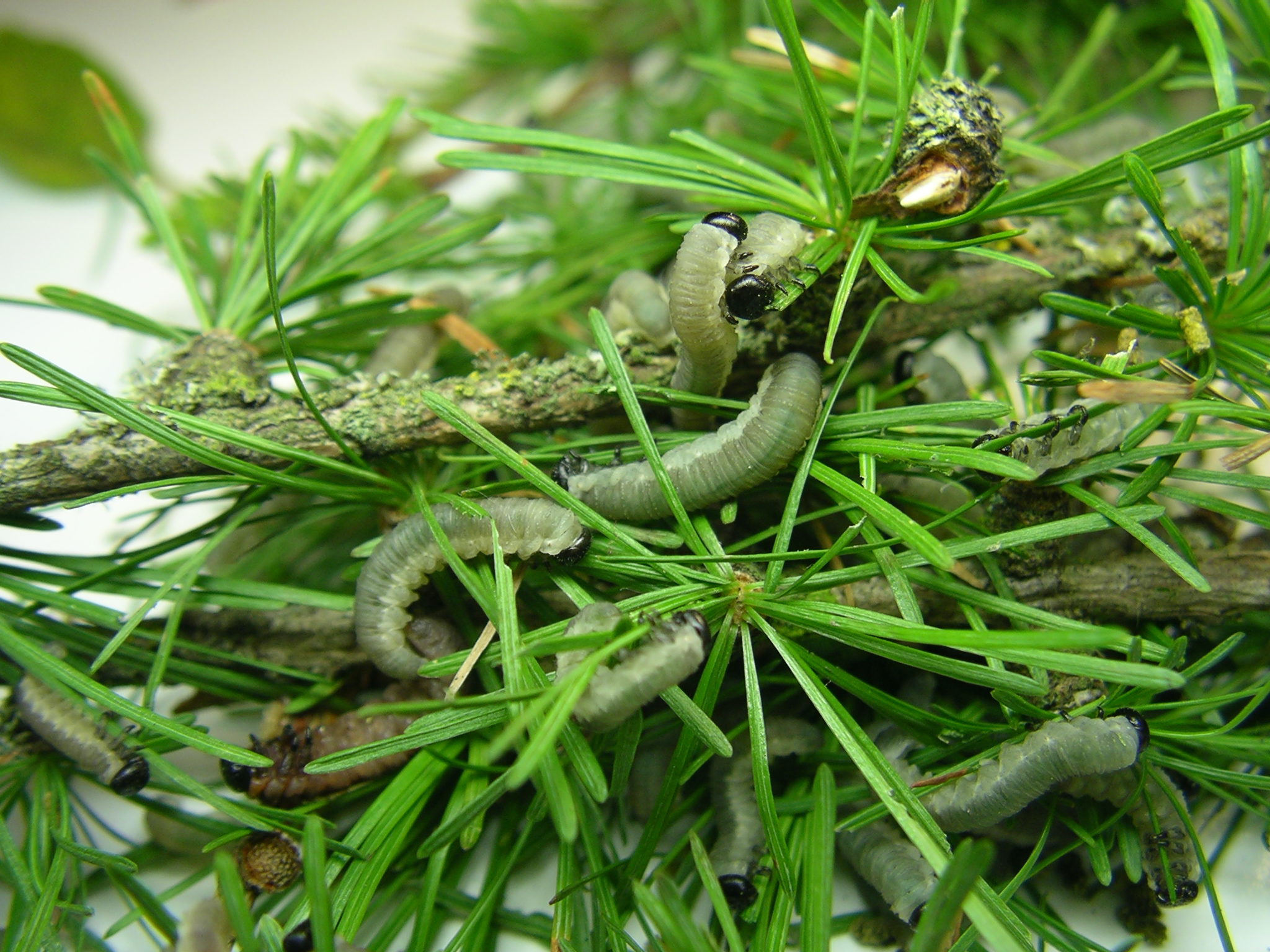- Larch sawfly
Taxobox | name = "Pristiphora erichsonii"

regnum =Animal ia
phylum =Arthropod a
classis =Insect a
ordo =Hymenoptera
familia =Tenthredinidae
genus = "Pristiphora "
species = "P. erichsonii"
binomial = "Pristiphora erichsonii"
binomial_authority = (Hartig , 1837)The larch sawfly is a species ofsawfly . The adult sawfly resembles a blackwasp , is about ½ in in length with a thick waist and has brown to orangish markings on the abdomen. Larvae have black heads, gray-green bodies with white undersides, and are about 15–18 mm long when full grown. Larvae occur in groups and characteristically curl their bodies upward in a 'J' shape when disturbed.In the spring when larch trees are leafed out and the new growth is expanding, the female sawfly can be seen depositing eggs in new shoots near the branch tips.
Damage symptoms
Egg-laying causes shoots to curl as they grow. Larvae occur in groups or clumps and are very obvious when present. Defoliation is rarely complete but trees can appear very thin crowned.
Most trees are very tolerant of defoliation and trees generally recover during the summer, however severe defoliation over several years can weaken the trees causing them to be less likely to survive a harsh winter.
Life cycle
Winter is spent in the soil as a prepupa. Adults emerge in late spring and females lay eggs in elongating shoots. Larvae feed on needles for 3-4 weeks, generally in Late June and Early July. However, emergence can be delayed for some individuals larva can be present throughout the summer.
Gallery
Wikimedia Foundation. 2010.
